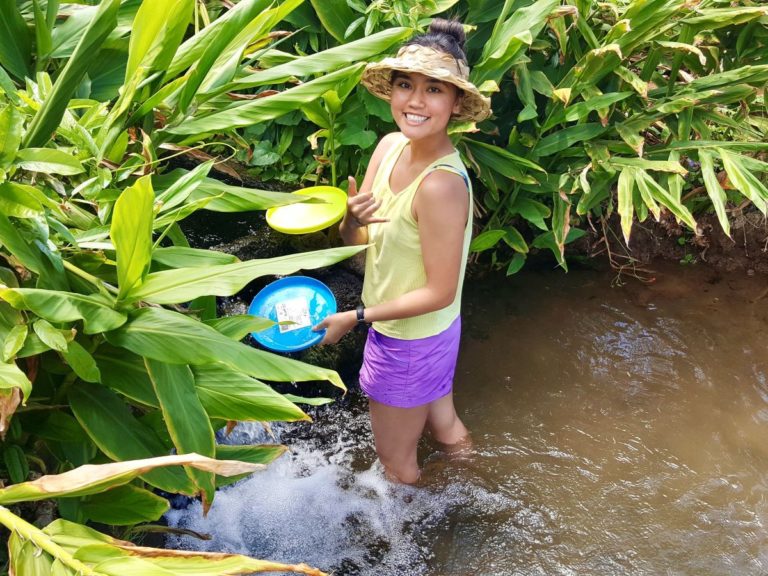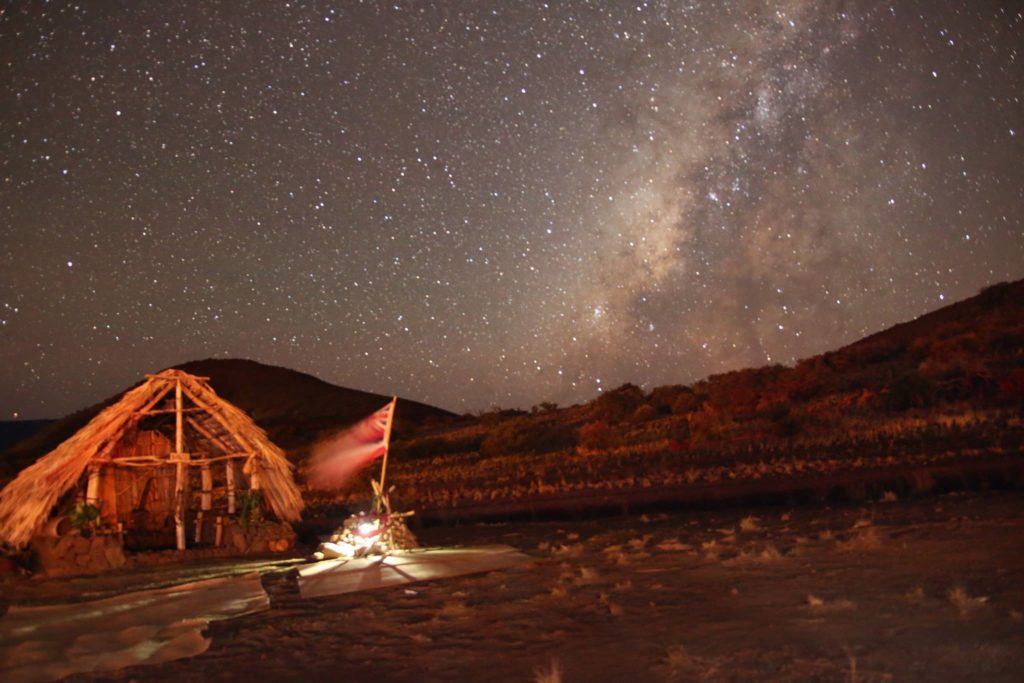

By Purple Maiʻa Board and Staff: Donavan Kealoha, Olin Lagon, Kelsey Amos, Kamuela Enos, Nāpali Souza, Forest Frizzell, and Marion Ano
After watching kiaʻi mauna maintain their protection of Mauna Kea with steadfast commitment and kapu aloha on Wednesday, and knowing that the TMT LLC has tried to gain support by offering money to fund STEM education, we at Purple Maiʻa feel the need to kākoʻo the arguments that have already been eloquently made by others.
We are thinking especially of people like Bryan Kamaoli Kuwada, who points out that the fight for Mauna Kea is a fight for the future rooted in a deep understanding of ancestral practices, and Narrissa P. Spies who tells how as a Hawaiian scientist she used research to come to her own conclusions about TMT’s values and intentions, leading her to reject a TMT THINK scholarship.
What we can offer in addition to these voices are our ongoing reflections on Native Hawaiian science and technology practices. How (and why) did our ancestors develop and use technology? What does this mean for the practice of science in Hawaiʻi? And what is our kuleana going forward?
We see the need for indigenization of science as being of vital import. The ancestral scientists of these pae ʻāina had one moral prerogative embedded within their work: “How do I explicitly ensure that my people will be able to thrive in their ahupuaʻa?” All acts of “science” took place in the context of the complex set of relationships (human and natural) of an island. Deploying this methodology, which drew from both empirical rigor as well as from intuitive spiritual communion, the kupuna of this ʻāina–who revered Mauna-a-Wākea–were able to thrive on the most remote archipelago on the planet. The legacy of these ancestral scientists ranges from loko iʻa and loʻi kalo to the Kumulipo and the ahupuaʻa construct–incredible feats of physical engineering and intellectual systems thinking that were all deployed in the service of sustaining kānaka’s relationship with each other, the ʻāina around them, and the deified ancestors before them. Bringing this sentiment forward will only be of service to our contemporary society, and it is this sentiment that informs Purple Maiʻa’s vision of the future:
First of all, Hawaiians will have jobs in technology without having to sacrifice sacred sites, cultural values, and connection to community in order to get them. Right now the figures on diversity in the tech industry show that while technology may be colorblind, people of color do not have equal access to technology education and high-skilled jobs in technology. For Hawaiians and students from Hawaiʻi, leaving to pursue tech jobs and tech education is all too often a necessity. This means that many people don’t pursue technology as an extension of ancestral practices. That needs to change.
Second, our definition and understanding of what technology is will expand to recognize the value of ancestral practices and their applicability to contemporary problems. Ancestral knowledge is encoded with values and with an empowered orientation toward the world; this is a world in which we, like our ancestors, are makers of our own technological hacks, innovations, and equitable solutions. In the future, we understand that there is no contradiction between science and culture because they are embedded in each other.
Finally, technology will truly serve communities, the land, and their continued connections to each other. Rather than pursuing a project and justifying how it helps everyone and/or apologizing for how it harms others later, technology practitioners will listen and think critically about how their work impacts communities and the land before, during, and after undertaking a project.
Imagine it with us: a future where children chant to ask permission before turning on their computers but don’t have to ask anyone to fund their educations. That’s the future of technology we’re fighting for.